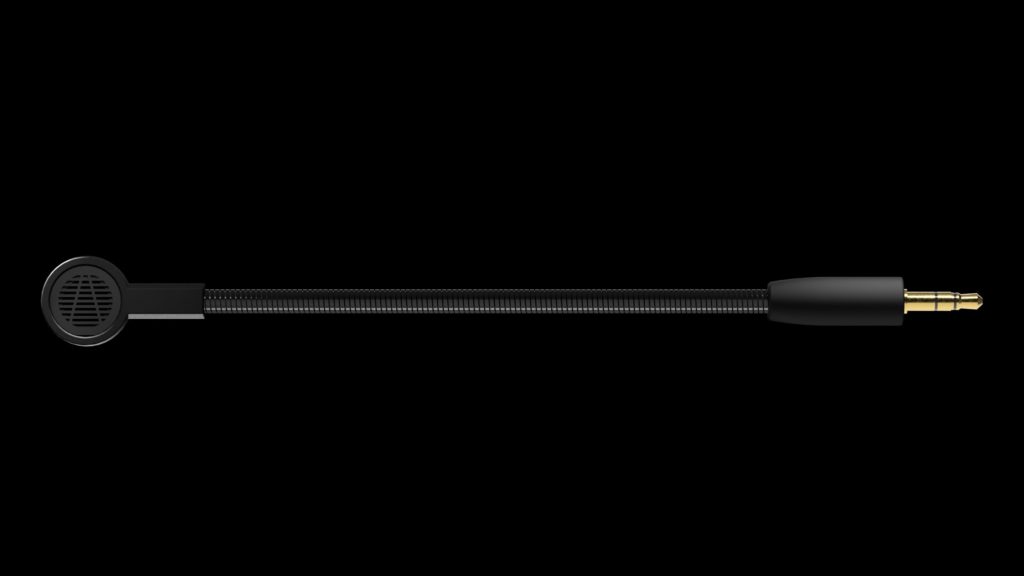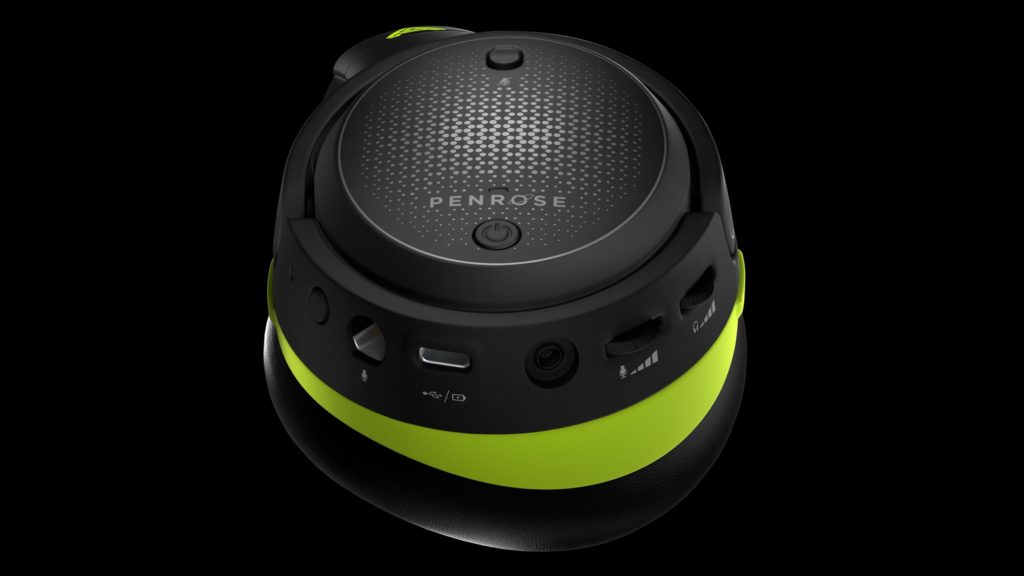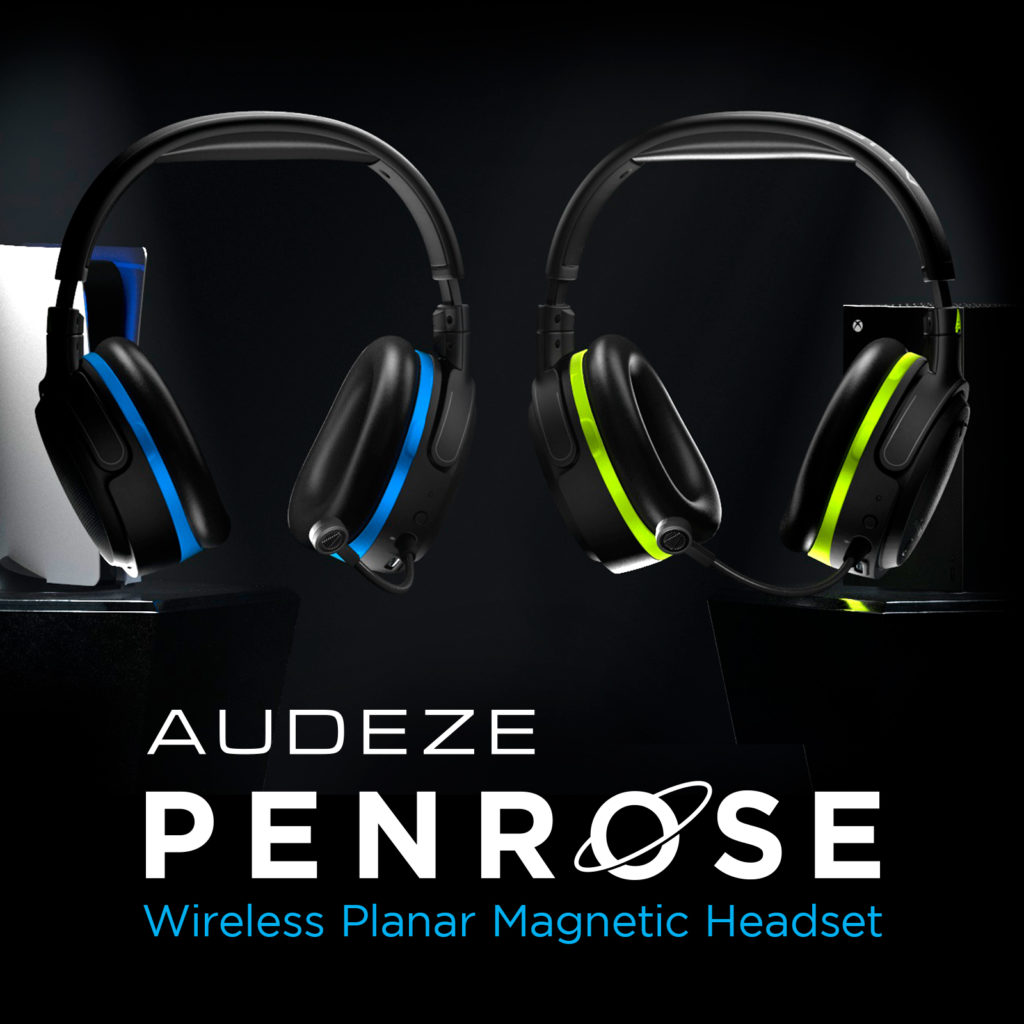Audeze have announced the Penrose wireless headset designed for Series X and PS5 (also PC, mobile and current-gen systems, too).
Audeze makes up two of my top three current favourite headsets. The LCD-GX, that I gave a 9.9/10 (the highest score I’ve ever awarded), sits at the top of that list. Second on that list is the Audeze Mobius, possibly the most technologically advanced headset I’ve ever used, with incredible sound quality. (Third place is the Logitech G Pro X – simply the most bang-for-your-buck of any headset I’ve tested.)

Will Audeze’s newest headset, the Penrose, break into my personal top three?
“We’re excited to finally offer gamers a true wireless planar headset,” says Audeze CEO Sankar Thiagasamudram, adding “Penrose is a huge leap forward for wireless console gaming audio and we can’t wait for people to hear it.”
At first glance, the Penrose takes a lot of design cues from the Mobius. The main difference seems to be the colour coded trim around the ear cups; metallic green for the Xbox compatible Penrose X, and metallic blue for the PS compatible Penrose. There are other, more significant differences, though.


Look to the end of the boom mic and you’ll see a newly designed microphone, with the stylised Audeze ‘A’ integrated into the housing. The detachable boom mic connects in the same way, into the same place, but the new broadcast-quality boom mic should be a significant improvement over the mic from the Mobius. Engineered to bring enhanced voice quality for streaming and chat, the built-in filters eliminate up to 20dB of ambient noise, to give a much cleaner signal when you are speaking.

The other new innovation is the addition of a wireless dongle. With Mobius, to connect to consoles you need to use the 3.5mm headset jack. The sound quality is superb, but you are paying extra for features that are only available to PC users. Penrose allows you to connect wirelessly now, but there’s a catch.
Somewhat surprisingly, Penrose doesn’t have the integrated surround-sound processor, the 3D spatial audio or head tracking. The next gen consoles have developed their own advanced 3D audio tech but as the solution on Mobius was so effective, it’s a shame they didn’t include it for Penrose.

Audeze’s planar magnetic headphones offer, in my opinion, the best sound of not just gaming headsets, but pretty much any set of headphones. Incorporating this amazing sound into a wireless console gaming headset with all the tech of the Mobius would have seen this headset move firmly to the top of my favourite gaming headsets list. Without this tech, though, I would still recommend the Mobius for PC gamers, however, the Penrose now fills a niche for console games.
With the new consoles placing a major focus on the quality of their audio, you owe it to yourself to have the best quality sound piped through to your ears, and for me, that means Audeze.

Much like the Mobius, Penrose has full connectivity with pretty much anything you can imagine. The 3.5mm jack covers most legacy devices and current-gen consoles, Bluetooth 5.0 covers most mobile devices these days, as well as many PC and laptops, USB can be used to connect to PCs and for charging the headset, and the USB dongle has next-gen gaming systems covered, too.
So, who is the Penrose for? Well, the Penrose range is geared up primarily at the Series X and PS5, offering an audiophile-grade headset with high-speed wireless connectivity. If you are getting the next-gen consoles, this should definitely be up for consideration.
If you prefer gaming on PC, or don’t need wireless connectivity, then the Mobius is still one of the best and most tech-packed headsets on the market.
Which one would you choose?
To commemorate this announcement, the Audeze Penrose is now available to pre-order for the limited promotional price of £249 (£50 off MSRP). Pre-order details can be found at https://penrose.audeze.co.uk/

The Audeze Penrose is expected to begin shipping this September.
Correction: This article was amended, as we didn’t realise the Penrose doesn’t contain the head tracking, 3D Audio and DSP of the Mobius. It still looks like a great headset, but it’s not a replacement for the Mobius and bears several significant differences that have been highlighted.

